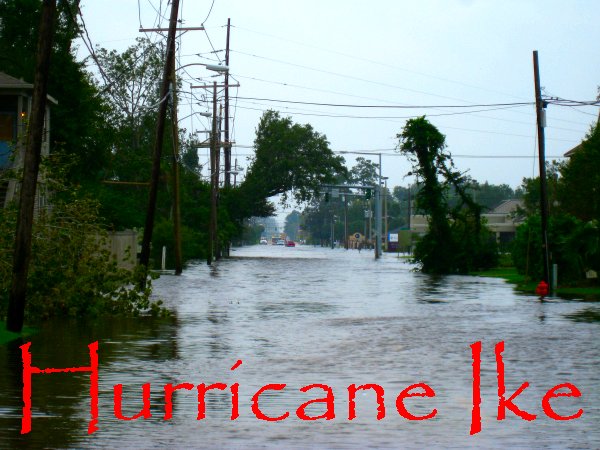Hurricane Ike will long be remembered as one of the most devastating storm surge hurricanes to affect the Upper Texas and Louisiana Coasts within the last 150 years of records.
Hurricane Ike developed from a vigorous tropical wave that emerged off the west coast of Africa on August 29th, passing over the Cape Verde Islands on the 30th. The wave gradually became better organized during the next two days. Tropical Depression #9 advisories were initiated by 10 AM CDT September 1st, with the depression being upgraded to Tropical Storm Ike by 4 PM CDT.
Ike strengthened only modestly through September 2nd. By 4 PM CDT September 3rd, Ike was upgraded to and 80 mph hurricane, and rapidly strengthened the next 12 hours to 145 mph by 4 AM CDT on September 4th, some 900 miles northeast of the Leeward Islands of the Eastern Caribbean.
After traversing west-northwest since leaving the west coast of Africa, Ike began to move west near 24 degrees north and 60 degrees west. From September 5th and 6th, a rather strong mid to upper level high pressure ridge off the United States East Coast began to steer Ike on a rather unusual west-southwest track.
Ike made landfall across Great Inagua Island (southernmost Island of the Bahamas) as a category 4 hurricane on the morning of September 7th, plowing into the Northeast Coast of Cuba as a category 3 hurricane later that evening. Ike crossed Cuba overnight, and emerged into the Caribbean Sea the morning of September 8th. For the next 24 hours, Ike hugged the southern coast of Cuba as a minimal hurricane, eventually crossing the western tip of Cuba midday on September 9th. Click here to see the entire track of Ike.
Once Ike emerged into the Gulf, he began tracking more northwestward in response to a weakness in the upper level ridge. During this time, the central pressure gradually fell from 968 mb upon entering the Gulf to 944 mb by the evening of September 10th. What was unusual was the low sustained winds of 100 mph associated with this pressure, and the large envelop of winds associated with Ike. Ike continued to grow in size overnight. By 10 AM CDT on September 11th, Aircraft Reconnaissance measured Ike's tropical storm wind swath to be approximately 450 miles wide, with a hurricane force wind swath of 180 miles! It was at this time that the Hurricane Warning from Morgan City, LA to Baffin Bay, TX was issued. Ike has began to turn more west-northwestward by this time in response to a building mid to upper level ridge over the southern United States.
Ike continued its large size as it tracked towards the Upper Texas Coast the next 36 hours. For the last 18 hours before landfall, Ike's structure began getting better organized with an eye evident. Ike made landfall on Galveston Island at 2:10 AM CDT September 13th as a strong category 2 (based on 110 mph sustained winds) and a central pressure of 952 mb. Click the radar & satellite links here for images at the time of landfall. Click here for Ike's path across the Gulf.
The combination of Ike's large wind swath, and the fact that this wind swath piled water over the shallowest portion of the Gulf, lead to much higher than normal storm surge flooding along the Upper Texas and Louisiana Coasts, with the storm surge reaching north of I-10 in Lake Charles, Louisiana. See the Storm Surge & River Levels section below.
Listed below are post-storm reports and meteorological data gathered from Hurricane Ike. All data is considered preliminary, and is subject to change at any time. Additional information will continue to be added to this page in the future.
|
Post Tropical Cyclone Reports
|
|
|
|
Shreveport, LA |
| Houston/Galveston, TX |
Corpus Christi, TX |
Brownsville, TX |
| Austin/San Antonio, TX |
Fort Worth, TX |
Mobile, AL |
| Miami, FL |
Tampa Bay, FL |
Key West, FL |
| National Hurricane Center's Tropical Cyclone Report |
|
